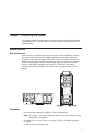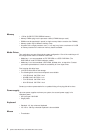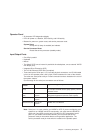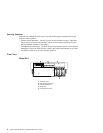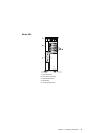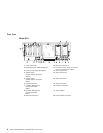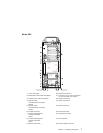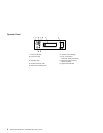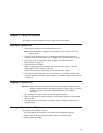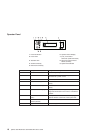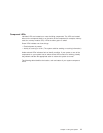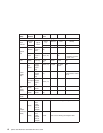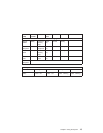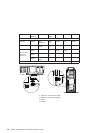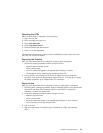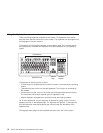
Chapter 2. Using the System
This chapter provides information on how to start and use the system.
Starting the System Unit
1. Set the power switches of the attached devices to On.
Note: When the system is plugged in but not powered on, the Power-On LED
flashes slowly.
2. If the LED is not flashing and OK is not displayed, ensure that the power cord,
located at the back of the system unit, is plugged into a grounded electrical outlet.
3. If this does not solve the problem, go to Chapter 8, “Hardware Problem
Determination” on page 157.
4. Press the Power-On button.
When you press the Power-On button, the Power-On LED comes on, and the
system starts a POST (power-on self-test).
During POST, progress codes display in the operator panel display.
5. If the Power-On LED does not come on and there is no indication of power when
you press the Power-On button, go to Chapter 8, “Hardware Problem Determination”
on page 157.
Stopping the System Unit
Attention: When you use the shutdown procedure for your system, follow the correct
shutdown procedure before you stop the system. Failure to do so can result
in the loss of data. The system is powered down by the shutdown
procedure.
1. At a command line, type shutdown to stop the operating system.
2. After you shut down the operating system, set the power switches of any attached
devices to Off.
3. If you will be servicing the system, unplug the system-unit power cable from the
electrical outlet.
Reading the Operator Panel Display
The operator panel display is used to:
v Track the progress of the system unit self-tests and configuration program
v Display codes when the operating system comes to an abnormal end
v Display system messages
9



